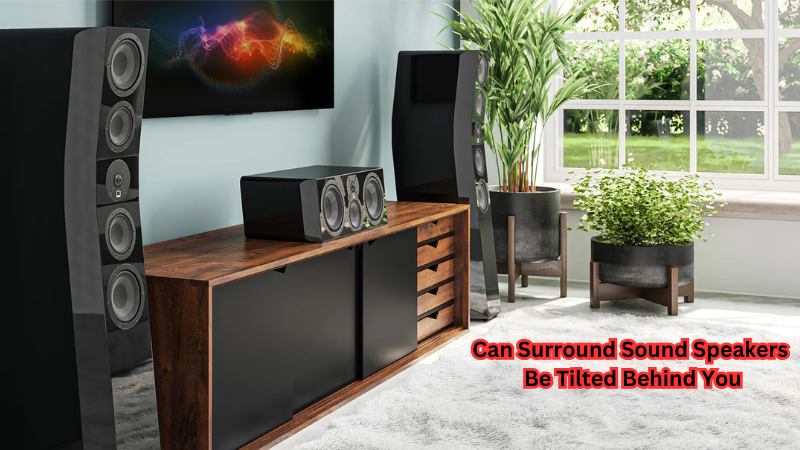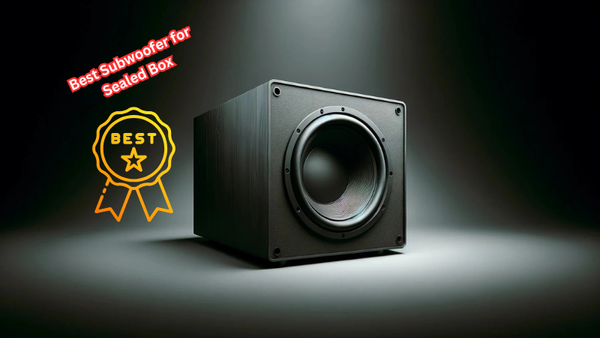In the pursuit of creating the ultimate home theater experience, understanding the nuances of surround speaker placement is crucial. Rear surround speakers play a pivotal role in enveloping the listener with immersive audio, yet their positioning often sparks debate, particularly in rooms with unconventional layouts.
As enthusiasts experiment with tilting speakers, questions arise about the impact on sound quality and the overall listening experience. Placing speakers behind the listening position or against the rear wall can affect acoustics, especially when they deviate from the traditional ear-level setup.
This article delves into whether tilting rear surround speakers can enhance or hinder your home theater setup, emphasizing the importance of strategic home theater speaker placement.
The Basics of Surround Sound Speaker Placement
To understand the potential impact of tilting surround speakers, it is necessary to first grasp the fundamentals of speaker placement in a surround sound setup.
In general, a traditional 5.1 or 7.1 home theater layout consists of front left and right speakers, a center channel speaker, and rear left and right (surround) speakers placed slightly behind the main seating area.
The front three speakers are typically positioned at ear level for optimal sound projection towards the listener, while the rear surround speakers are usually placed slightly above ear level to create an immersive soundstage.
However, this standard setup may not always be feasible due to room size or furniture arrangement, leading to the question of whether tilting surround speakers can provide a viable solution.
Importance of Rear Surround Speakers
Rear surround speakers are essential for creating a realistic and impactful home theater experience. These speakers are responsible for reproducing ambient sound effects, including background noise, music, and directional sounds such as cars passing by or birds chirping.
Without proper placement and orientation, the immersive effect of these sounds may be lost, diminishing the overall audio quality of the home theater setup. This is why careful consideration must be given to rear surround speaker placement to achieve optimal results.
Can Surround Sound Speakers Be Tilted Behind You?
The answer is yes, surround sound speakers can be tilted behind the listener. However, this should not be the default placement as it may impact sound quality and immersion.
When tilting rear surround speakers, they are essentially pointing away from the primary seating area, which could result in sound projection towards walls or other objects rather than directly to the listener's ears. This can cause a decrease in clarity and detail of sound effects, leading to a less immersive experience.
Additionally, tilting surround speakers too much could also affect their ability to blend with front and center channel speakers, creating an unbalanced audio mix. Therefore, if tilting is necessary due to room limitations, it should be done carefully and in moderation.
Pros of Tilting Surround Sound Speakers
- Improved Sound Dispersion: Tilting rear surround speakers can help disperse sound waves more evenly throughout the room, creating a more cohesive and immersive audio experience. This can be particularly beneficial in larger rooms or irregularly shaped spaces where traditional speaker placement may not provide adequate sound coverage.
- Better Imaging: In certain setups, tilting rear surrounds towards the front of the room can create better imaging and depth perception. This is especially true in smaller rooms with limited space for proper speaker placement.
- Accommodating Room Limitations: As mentioned earlier, sometimes room size or furniture arrangement may make it difficult to follow the standard ear-level placement for rear surround speakers. Tilting the speakers can provide a viable solution in such cases, allowing for better sound projection toward the listener.
- Enhanced Bass Response: Tilting surround speakers behind the seating position can also improve bass response and low-frequency effects by directing sound waves downward toward the listener's ears. This is particularly useful in rooms with high ceilings where low frequencies may get lost in the open space.
The height speakers in a home theater system can also be tilted to provide similar benefits, especially for Dolby Atmos setups where these speakers are responsible for creating overhead sound effects.
Cons of Tilting Surround Sound Speakers
While tilting surround speakers may offer some potential benefits, there are also some drawbacks to consider before implementing this setup:
- Decreased Immersion: As mentioned earlier, tilting surround speakers too much or pointing them away from the listening position can significantly impact the immersive effect of surround sound. This is because sound effects may not be directed toward the listener's ears, resulting in a less realistic and engaging audio experience.
- Imbalanced Sound Mix: Tilting surround speakers can also affect how they blend with other speakers in the setup, particularly the front center speaker. If these speakers are not properly aligned, it can create an unbalanced sound mix with some channels being more dominant than others. This can result in muffled or distorted audio that takes away from the overall listening experience.
- Potential Damage to Speakers: In some cases, tilting rear surround speakers too much could put a strain on their internal components and damage them over time. It is essential to ensure that the speakers are not tilted beyond their recommended range to avoid any potential damage.
And also subwoofer placement behind the couch, Installing rear surround speakers directly behind the listener's seating position can create some challenges when it comes to subwoofer placement. This is because the subwoofer may not be able to interact with the sound waves coming from the rear speakers effectively, resulting in weaker and less impactful bass.
Alternative Solutions
If traditional speaker placement is not feasible, there are alternative solutions that can help achieve optimal sound quality without tilting rear surround speakers.
These include using wall mounts or stands to elevate speakers to the desired height, utilizing angled speakers, or investing in high-quality wireless surround sound systems that allow for more flexible placement options.
Ultimately, the best solution will depend on individual room constraints and personal preferences. It is crucial to experiment with different setups and positioning to find the optimal configuration for your specific home theater system.
Practical Tips for Setup
When setting up a home theater system, proper placement and positioning of speakers are crucial for achieving optimal sound quality. Here are some practical tips to keep in mind when setting up your rear surround speakers:
- Follow the Rule of Thumb: A general rule of thumb is to place rear surround speakers at least 2 feet above ear level and angled towards the main listening position. This allows for better sound projection while avoiding any potential damage to the speakers.
- Consider Using Stand Mounts: If wall mounting is not an option, consider using stands or speaker mounts to elevate your rear surrounds to the recommended height. These can also be adjusted for angling towards the listener's ears.
- Angle Speakers Towards Front: To achieve better sound dispersion and imaging, consider tilting rear surround speakers towards the front of the room rather than directly to the main listening position. This also helps with blending them more seamlessly with the front and center speakers.
- Optimize Subwoofer Placement: As mentioned earlier, subwoofers can have a significant impact on overall bass response in a home theater system. When placing your rear surrounds behind your seating position, make sure to experiment with different subwoofer positions to find the optimal placement for maximum bass impact.
- Consider Professional Installation: For those who are not confident in setting up their home theater system themselves, it may be worth investing in professional installation services. This ensures that all speakers are properly positioned and calibrated for optimal sound quality.
In conclusion, while tilting rear surround speakers may offer some potential benefits in certain situations, it is essential to consider the drawbacks and alternative solutions as well. With proper placement and setup, you can achieve an immersive and high-quality audio experience in your home theater system without resorting to tilting your rear surrounds.
FAQs
Are front speakers affected by tilting rear surround speakers?
Tilting rear surround speakers can potentially affect the balance and blend of sound between the front and center speakers, resulting in an imbalanced sound mix. It is crucial to experiment with different angles and positions to find the optimal setup for your specific system.
Can car audio systems benefit from tilted speakers?
While tilting car audio speakers may offer some potential benefits, it is not recommended as it can be potentially hazardous while driving. It is best to stick with traditional speaker placement methods for car audio systems.
Can wireless surround sound systems be tilted as well?
Yes, wireless surround sound systems can also benefit from tilting rear speakers if traditional placement methods are not feasible. However, it is essential to ensure that the speakers are not tilted beyond their recommended range to avoid any potential damage.
Conclusion
In deciding whether to tilt surround sound speakers behind you, it's essential to weigh the pros and cons.
While tilting can enhance sound coverage and depth, it may also lead to distortion or uneven sound fields if not done correctly. Proper speaker placement is crucial to maintaining sound clarity and achieving the desired immersive experience in your home theater.
Ultimately, the impact on sound quality depends on the room's acoustics and the positioning relative to your listening area. Experimenting with different angles and setups allows you to tailor the audio experience to your liking. Strive for balance and clarity to ensure your home theater system delivers optimal performance.





